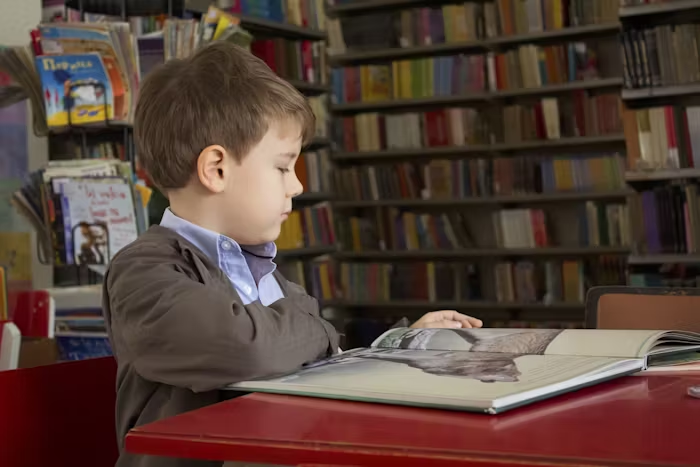In every human connection, from romantic bonds to friendships and family relationships, our attachment styles profoundly influence how we interact with others. These patterns of attachments, shaped early in life, dictate how we connect, trust, and communicate in our adult relationships. Understanding attachment styles can not only improve your relationships but also help you foster better emotional well-being and mental health.
This article delves deep into the concept of attachment styles, their types, their origins, and actionable strategies to nurture healthier connections with people.
What Are Attachment Styles?
Attachment styles are behavioral and emotional patterns that describe how individuals relate to others, especially in close relationships. These styles stem from the bonds formed with primary caregivers during childhood.

Why Do Attachment Styles Matter?
- Emotional Regulation: They influence how you handle emotions in relationships.
- Conflict Management: Understanding your style helps resolve conflicts productively.
- Mental Health: Attachment issues can lead to anxiety, depression, or difficulties in trusting people.
- Relationship Satisfaction: Secure attachments often lead to fulfilling and balanced relationships.
The Four Types of Attachment Styles
Psychologists John Bowlby and Mary Ainsworth pioneered the study of attachment theory, identifying four primary attachment styles: secure, anxious, avoidant, and disorganized. Each style reflects unique emotional tendencies and behaviors in relationships.
1. Secure Attachment Style
People with a secure attachment style are comfortable with intimacy and independence. They trust their partners, communicate effectively, and manage emotions healthily.
Characteristics:
- Open communication.
- High self-esteem.
- Ability to balance closeness and personal space.
Origins:
Secure attachments often develop when caregivers provide consistent love, attention, and support during childhood.
Impact on Relationships:
- Strong emotional bonds.
- Constructive conflict resolution.
- Higher satisfaction in relationships.
2. Anxious Attachment Style
Individuals with an anxious attachment style often seek constant reassurance and fear abandonment. They are highly attuned to their partner’s emotions but may struggle with self-doubt.
Characteristics:
- Craving validation and closeness.
- Difficulty trusting relationships.
- Intense fear of rejection or abandonment.
Origins:
Anxious attachments typically result from inconsistent caregiving, where a child’s emotional needs were unpredictably met.
Impact on Relationships:
- Frequent need for reassurance.
- Overthinking and emotional sensitivity.
- Challenges in maintaining emotional balance.
3. Avoidant Attachment Style
People with an avoidant attachment style value independence and often resist emotional closeness. They may suppress emotions and feel uncomfortable relying on others.
Characteristics:
- Avoiding vulnerability or deep emotional connections.
- Prioritizing self-reliance.
- Difficulty expressing emotions.
Origins:
Avoidant attachments develop when caregivers discourage emotional expression or consistently fail to meet emotional needs.
Impact on Relationships:
- Reluctance to open up.
- Challenges in forming deep connections.
- Tendency to prioritize autonomy over intimacy.
4. Disorganized Attachment Style
Also known as fearful-avoidant attachment, this style combines traits of both anxious and avoidant types. Individuals with disorganized attachment often desire closeness but fear intimacy due to unresolved trauma or inconsistent caregiving.
Characteristics:
- Emotional unpredictability.
- Fear of rejection and abandonment.
- Conflicted desire for closeness and distance.
Origins:
Disorganized attachments often stem from childhood trauma, neglect, or abuse.
Impact on Relationships:
- Emotional instability.
- Difficulty trusting people.
- Struggles with both intimacy and autonomy.
How Attachment Styles Form
Attachment styles are shaped during early childhood based on interactions with primary caregivers. Consistent, loving care fosters secure attachments, while neglect, inconsistency, or trauma can lead to insecure attachment styles.
Key Factors Influencing Attachment Formation:
- Caregiver Responsiveness: Reliable responses to emotional needs promote security.
- Parental Emotional Availability: Emotionally supportive caregivers encourage healthy emotional expression.
- Environmental Stability: Safe, nurturing environments support secure attachments.
Recognizing Your Attachment Style
Understanding your attachment style is the first step toward personal growth and healthier relationships.
Questions to Reflect On:
- Do you trust people easily?
- How do you handle conflict in relationships?
- Are you comfortable with emotional intimacy?
- Do you seek reassurance or avoid emotional closeness?
The Link Between Attachment Styles and Mental Health
Your attachment style can significantly impact your emotional and psychological well-being.
Secure Attachment:
- Promotes emotional resilience.
- Supports healthy coping mechanisms.
Insecure Attachments:
- Can contribute to anxiety, depression, and low self-esteem.
- May result in difficulty forming or maintaining meaningful connections with people.
Disorganized Attachment and Trauma:
- Often linked to unresolved trauma or PTSD.
- Can lead to emotional dysregulation and chronic stress.
How to Overcome Challenges with Insecure Attachment Styles
While your attachment style is rooted in early life experiences, it’s not fixed. With effort and self-awareness, you can shift toward more secure attachments.
1. Seek Professional Support
- Therapy, especially attachment-based or cognitive-behavioral therapy, helps address underlying issues.
- A therapist can guide you in processing emotions and developing healthier behaviors.
2. Practice Self-Awareness
- Reflect on how your attachment style influences your emotions and behaviors.
- Recognize patterns that hinder relationship growth.
3. Build Trust Gradually
- Take small steps toward trusting others.
- Practice vulnerability in safe, supportive relationships.
4. Enhance Communication Skills
- Express your feelings and needs openly.
- Listen actively and empathize with others’ perspectives.
5. Develop Emotional Regulation
- Use mindfulness and relaxation techniques to manage overwhelming emotions.
- Journaling can help you process thoughts and feelings.
Fostering Secure Attachments in Relationships
Building secure attachments requires effort and mutual commitment.
Tips for Healthy Attachments:
- Consistency: Be dependable and reliable in your actions and communication.
- Empathy: Show understanding and compassion for others’ emotions.
- Respect Boundaries: Balance closeness with personal space.
- Conflict Resolution: Approach disagreements constructively and seek solutions together.
Attachment Styles in Parenting and Raising Emotionally Healthy Children
As a parent, understanding attachment theory can help you foster secure attachments in your children.
How to Promote Secure Attachments:
- Be Present: Respond consistently to your child’s needs.
- Encourage Emotional Expression: Validate and support your child’s feelings.
- Create a Safe Environment: Provide stability and security.
- Model Healthy Relationships: Demonstrate trust, empathy, and open communication.
Attachment Styles in the Workplace
Attachment styles don’t just affect personal relationships — they also influence professional dynamics.
How They Manifest:
- Secure: Strong teamwork and effective communication.
- Anxious: Fear of criticism or rejection from colleagues.
- Avoidant: Reluctance to collaborate or seek help.
- Disorganized: Difficulty managing workplace relationships.
Improving Workplace Interactions:
- Be mindful of your attachment-related tendencies.
- Foster open and respectful communication with colleagues.
The Role of Attachment Styles in Romantic Relationships
Attachment styles often become most apparent in romantic relationships. Understanding these dynamics can improve intimacy and reduce conflict.
Secure Relationships:
- Balanced closeness and independence.
- Effective conflict resolution.
Insecure Relationships:
- Anxious individuals may cling to their partners.
- Avoidant individuals may withdraw emotionally.
Strengthening Bonds:
- Work together to understand each other’s attachment styles.
- Practice patience and mutual support.
The Journey Toward Secure Attachments
Transforming insecure attachment styles into secure ones is a process that requires dedication and self-compassion.
Steps to Grow Toward Security:
- Reflect on your past experiences and how they shape your attachments.
- Invest in personal growth through therapy, reading, or workshops.
- Build relationships with supportive, understanding people.
Attachment styles are a vital key to unlocking healthier relationships, improved mental health, and emotional resilience. By understanding your patterns and working to nurture secure attachments, you can foster deeper connections and create a more fulfilling life.
Whether it’s your relationship with family, friends, or colleagues, recognizing and addressing your attachment tendencies is a powerful step toward personal growth and better emotional health. Take the first step today — because understanding your attachments isn’t just about relationships; it’s about understanding yourself.














